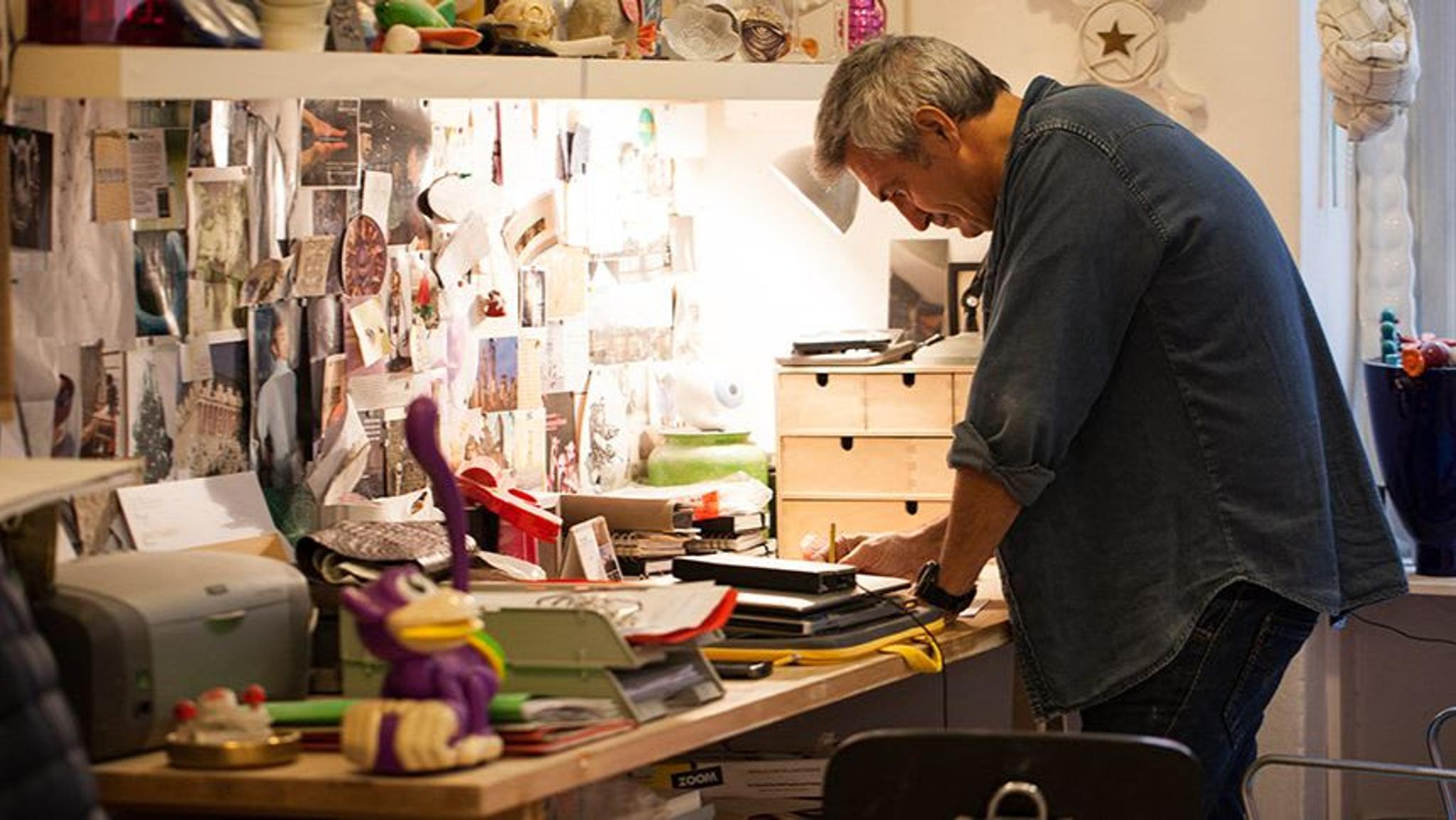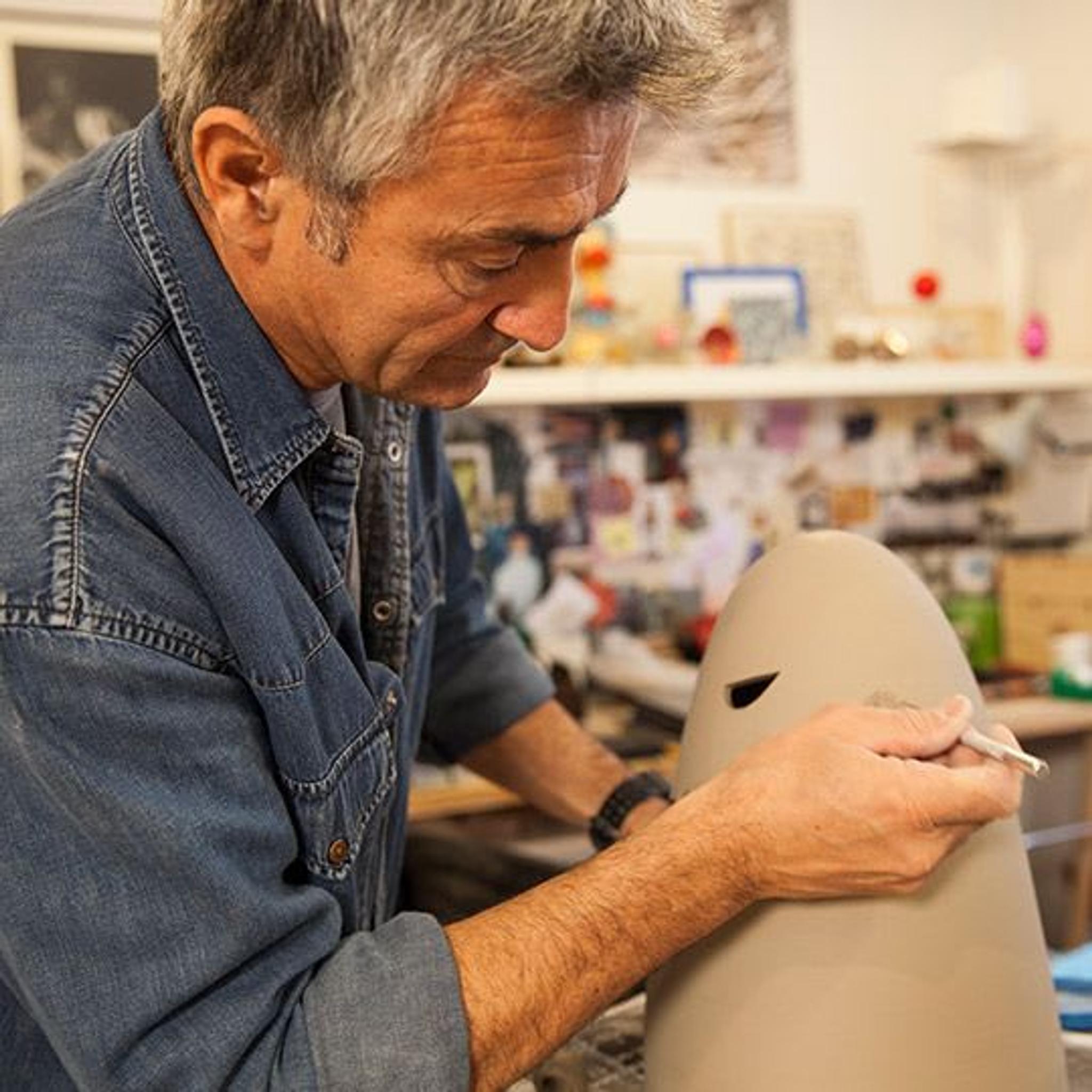
Roberto Cambi
Bubble Flowers Giant Chandelier
USD 51,745
Ships in 1 week

Interview with ceramist Roberto Cambi. A look at Cambi’s avant-garde and eclectic ceramics.
by Valentina Raggi
Ceramic has an archaic quality to it, it is the fragile and delicate material Roberto Cambi uses to give life to maxi installations or to make small, poetic, and surprising objects. It’s quintessentially art.


ARTEMEST: How do you begin, did you begin?
ROBERTO CAMBI: Inspiring hints. Both my installations and objects derive from things I read, people I meet, the experiences I go through in life. Ideas are born and I transform those ideas into specific objects through research. Chronologically, I began working with ceramics in the 70s. I studied the technique at the Accademia di Pittura and then I opened a small studio. I was raised near Forlì, but soon enough I moved to Milan, a more dynamic and international city.

A: Arts&Crafts are making a comeback. How do you foresee the future of ceramics
RC: After a period in which nothing was happening, people started using ceramics and porcelain in their design or fashion projects. It’s considered the “white Gold” because it can easily be used for jewels and furnishings. There is now a great interest around ceramics, but I can’t say anything about the future. Certainly we are using new technologies, see 3D printers and the unbelievable things they can do.


A: Are you in favor of new technologies in your field, which is based on traditions and artisanship
RC: Absolutely. We need to follow progress and technology; these are great resources. I create prototypes using advanced machinery and then I work on each single object using my bare hands.



A: You define your work as being a repetitive folly. Why
RC: I have to say that you need to be a little masochist to want to do ceramics. I am joking, but it’s true that my work is not done until it comes out of the oven, and if it doesn’t turn out right you have to start all over. On the positive side, the material is gorgeous and engaging. You can really mold it and shape into what you want. I am obsessed with it and I repeat the same elements over and over. My installations are an explosion of shapes that take over the exhibit. It’s a full immersion, it’s pure pleasure, or it can be overwhelming and scary. My latest project is called Bacteria, it’s an installations that “contaminates” the entire place like mold.


A: Ghosts, flowers, organic shapes, these are your subjects. It’s very surreal and pop. How would you describe them
RC: My style can be interpreted from different angles. I think it’s poetic, sometimes destructive, and there are subtle lines underneath. I like to look at fear, and ghosts are obviously a related symbol, it’s fear of the future. I try to show how we all feel and how sometimes we feel like we don’t know what to do or who to trust. We should trust ourselves first.


A: Future projects
RC: Top secret, still underwork. I will present my first collection for the home at Homi (the Milanese fair) in collaboration with the historic brand Corrado Corradi. I am also working on an exhibit that already exists and is already filled with my work. The exhibit will take place in between Milan and Turin.
A: Do you consider yourself and artist, a designer, or an artisan?
RC: I feel like and I am an artist. My approach to work and to life is that of an artist. I am influenced by what surrounds me, things that make me do projects and design for brands for instance. An artist’s work is inspired by people, situations, experiences, things that give him new creative inputs.

About the author Valentina Raggi is a design journalist and communications consultant. Raggi writes for Grazia Casa, Casa Vogue Brasile and How to Spend it Russia.

Devon&Devon is a luxury design and manufacturing company specializing in bespoke interior solution…

Sitia is a furniture brand renowned for creating pieces meticulously designed to offer truly "huma…